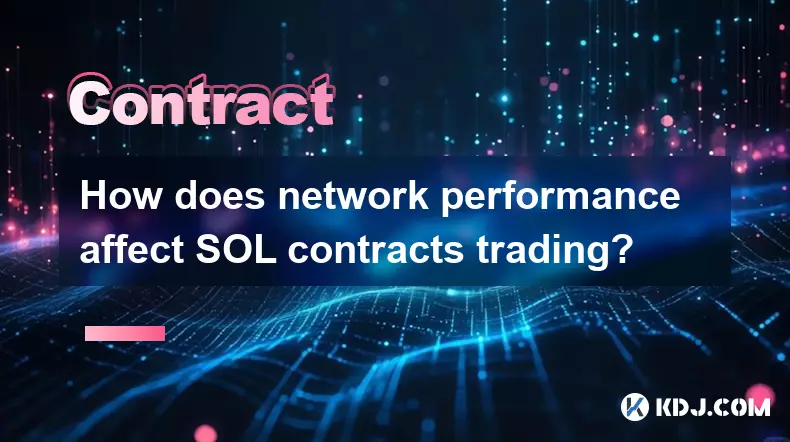-
 bitcoin
bitcoin $122659.385674 USD
0.52% -
 ethereum
ethereum $4484.113342 USD
-0.09% -
 bnb
bnb $1304.229256 USD
-0.85% -
 tether
tether $1.000204 USD
-0.03% -
 xrp
xrp $2.860636 USD
-0.51% -
 solana
solana $227.288799 USD
2.36% -
 usd-coin
usd-coin $0.999805 USD
0.01% -
 dogecoin
dogecoin $0.252837 USD
1.18% -
 tron
tron $0.341149 USD
1.12% -
 cardano
cardano $0.830507 USD
0.33% -
 hyperliquid
hyperliquid $45.792319 USD
0.04% -
 chainlink
chainlink $22.422164 USD
1.55% -
 ethena-usde
ethena-usde $1.000283 USD
0.01% -
 sui
sui $3.511389 USD
0.83% -
 stellar
stellar $0.385276 USD
-0.44%
What are Bybit's reduce-only orders?
Reduce-only orders on Bybit ensure trades only decrease existing positions, preventing unintended leverage or liquidation in volatile markets.
Sep 25, 2025 at 11:00 am

Understanding Reduce-Only Orders on Bybit
Bybit is one of the leading cryptocurrency derivatives exchanges, offering traders a variety of order types to manage risk and optimize their positions. Among these tools, reduce-only orders play a crucial role in position management. These orders are designed specifically to prevent unintended position increases during volatile market conditions.
A reduce-only order can only decrease an existing position or close it entirely. If the order would result in opening a new position or increasing the size of the current one, the system automatically cancels or rejects it. This feature provides traders with greater control, especially when placing stop-losses, take-profits, or trailing stops in fast-moving markets.
How Reduce-Only Orders Function
- When enabled, the order checks whether executing it would reduce the current position size.
- If the direction and size of the order align with reducing exposure, the trade proceeds.
- In cases where the order contradicts the current position—such as buying more in a long position beyond the required amount to close—it gets rejected.
- The mechanism works for both long and short positions across perpetual and futures contracts.
- Traders can activate reduce-only status manually when placing limit, market, or conditional orders on Bybit’s interface.
Practical Use Cases for Reduce-Only Settings
- Setting a stop-loss order without risking accidental leverage increase during sharp price swings.
- Placing a take-profit level that ensures partial or full exit without adding to the position due to incorrect order direction.
- Using grid trading bots where each sell (in a long) or buy (in a short) must strictly reduce exposure.
- Managing large positions where over-leveraging could trigger liquidation if additional margin is consumed unexpectedly.
Risks and Limitations of Reduce-Only Orders
- Orders may not execute during extreme volatility if they fail the reduction criteria, leaving positions exposed.
- Users relying solely on reduce-only settings might experience missed exits if prices gap past their levels.
- On highly illiquid pairs, even valid reduce-only orders might face slippage or partial fills.
- The feature does not guarantee execution—it only ensures that no new position is opened.
- Manual monitoring remains essential, as automation tools cannot account for every market anomaly.
Frequently Asked Questions
What happens if a reduce-only order tries to open a new position?The exchange blocks the execution. Bybit’s system validates the order against your current position and rejects any instruction that would increase exposure instead of reducing it.
Can I use reduce-only with leverage adjustments?Yes, but cautiously. Changing leverage doesn’t affect the reduce-only logic directly; however, altering margin levels can influence how close you are to liquidation, making precise order placement even more critical.
Is reduce-only available for spot trading on Bybit?No, this feature applies exclusively to derivative products such as USDT-margined and inverse perpetual contracts, as well as futures. Spot trading does not support reduce-only flags since there are no leveraged positions to manage.
Do reduce-only orders expire?They follow the same lifespan as the order type used. A reduce-only limit order remains active until filled, canceled, or expired based on its time-in-force setting (e.g., Good-Til-Canceled or Immediate-or-Cancel).
Disclaimer:info@kdj.com
The information provided is not trading advice. kdj.com does not assume any responsibility for any investments made based on the information provided in this article. Cryptocurrencies are highly volatile and it is highly recommended that you invest with caution after thorough research!
If you believe that the content used on this website infringes your copyright, please contact us immediately (info@kdj.com) and we will delete it promptly.
- BlockDAG, DOGE, HYPE Sponsorship: Crypto Trends Shaping 2025
- 2025-10-01 00:25:13
- Deutsche Börse and Circle: A StableCoin Adoption Powerhouse in Europe
- 2025-10-01 00:25:13
- BlockDAG's Presale Buzz: Is It the Crypto to Watch in October 2025?
- 2025-10-01 00:30:13
- Bitcoin, Crypto, and IQ: When Genius Meets Digital Gold?
- 2025-10-01 00:30:13
- Stablecoins, American Innovation, and Wallet Tokens: The Next Frontier
- 2025-10-01 00:35:12
- NBU, Coins, and Crypto in Ukraine: A New Yorker's Take
- 2025-10-01 00:45:14
Related knowledge

What is the difference between futures and perpetual contracts for Bitcoin?
Oct 02,2025 at 11:54pm
Understanding Bitcoin Futures Contracts1. Bitcoin futures are derivative instruments that allow traders to speculate on the future price of Bitcoin at...

What is the best time to trade PEPE contracts?
Oct 03,2025 at 11:54am
Understanding PEPE Contract Volatility1. PEPE contracts exhibit extreme price fluctuations due to their meme-based nature and low market cap. Trading ...

How does network performance affect SOL contracts trading?
Oct 09,2025 at 10:54am
Impact of Network Latency on SOL Contract Execution1. High network latency can delay transaction confirmations, directly affecting the timing of contr...

What are the common mistakes to avoid with Bitcoincoin contracts?
Oct 03,2025 at 08:54am
Emerging Trends in the Cryptocurrency Market1. Decentralized finance (DeFi) platforms continue to expand their influence across the blockchain ecosyst...

What is the maintenance margin for Bitcoin contracts?
Oct 02,2025 at 01:36am
Decentralized Exchanges Gain Momentum in 20241. Decentralized exchanges (DEXs) have seen a significant rise in trading volume, surpassing centralized ...

How to use technical analysis for trading XRP contracts?
Oct 03,2025 at 01:18pm
Understanding Price Patterns in XRP Futures1. Identifying chart patterns such as triangles, head and shoulders, and double tops or bottoms can provide...

What is the difference between futures and perpetual contracts for Bitcoin?
Oct 02,2025 at 11:54pm
Understanding Bitcoin Futures Contracts1. Bitcoin futures are derivative instruments that allow traders to speculate on the future price of Bitcoin at...

What is the best time to trade PEPE contracts?
Oct 03,2025 at 11:54am
Understanding PEPE Contract Volatility1. PEPE contracts exhibit extreme price fluctuations due to their meme-based nature and low market cap. Trading ...

How does network performance affect SOL contracts trading?
Oct 09,2025 at 10:54am
Impact of Network Latency on SOL Contract Execution1. High network latency can delay transaction confirmations, directly affecting the timing of contr...

What are the common mistakes to avoid with Bitcoincoin contracts?
Oct 03,2025 at 08:54am
Emerging Trends in the Cryptocurrency Market1. Decentralized finance (DeFi) platforms continue to expand their influence across the blockchain ecosyst...

What is the maintenance margin for Bitcoin contracts?
Oct 02,2025 at 01:36am
Decentralized Exchanges Gain Momentum in 20241. Decentralized exchanges (DEXs) have seen a significant rise in trading volume, surpassing centralized ...

How to use technical analysis for trading XRP contracts?
Oct 03,2025 at 01:18pm
Understanding Price Patterns in XRP Futures1. Identifying chart patterns such as triangles, head and shoulders, and double tops or bottoms can provide...
See all articles










































































